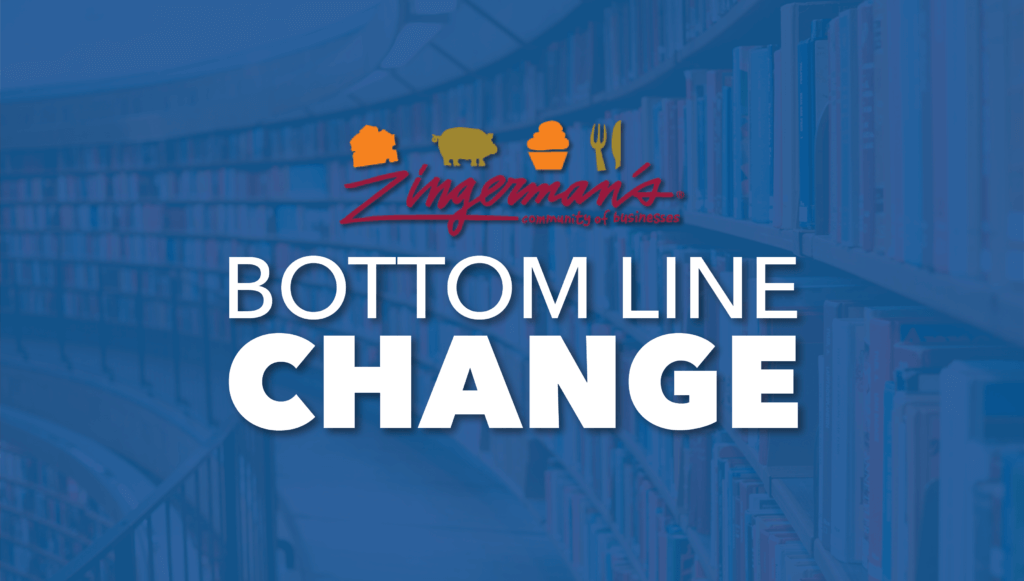
A sweet recipe for making change in your school community
Have you ever felt inspired to implement change with an innovative thought and didn’t know where to start? What about trying to change a process that was broken but no one wanted to initiate the change?
As the education community, we are constantly faced with change – changes in regulations, mandates, and even in daily dynamics. Most of these things are out of our control, and it may feel as though the change is done to us, not with us. While we recognize these actions are out of our control, it does not omit the fact that when it comes down to implementing these changes, sometimes it simply does not feel good, and therefore we may have some reservations.
On the flip side, there may have been times that you have felt inspired to be a part of a change that is collaborative and has direction. As a leader in the education community, you have the opportunity to enact change that fosters a sense of belonging and commitment using one simple process that we have found to be extremely beneficial for our organization that would like to share with you today called Bottom Line Change.
Bottom Line Change was created by Ari Weinzweig, Founder and CEO of Zingerman’s Community of Businesses here in Michigan. The idea is rooted in making effective change that will positively impact the bottom line, with change that must engage your team, cast a vision, and outline the first steps.
The formula for this process is: D x V x F = R.
D = Dissatisfaction. Discontentment with a shared issue.
V = Vision. Where are you going?
F = First Steps. This is your action plan to eliminate the dissatisfaction.
R = Resistance. How will you push through what’s standing in your way?
Dissatisfaction, Vision, and First Step when multiplied together need to exceed the resistance you can expect when you implement the change. Zingerman’s has found that when organizations use this recipe, change is far more likely to stick than when they don’t.
Here is what it could look like in your organization. Let’s say you are struggling with getting employees to collaborate on projects and you would like to introduce a new project and communication system organization-wide. (Hint: Choice Schools Central Office just used Bottom Line Change to implement Monday.com, a project and communication system, so this is a real example.)
Step 1: Create a clear and compelling purpose for change. In this step, you must collect data and your compelling reasons to implement the change, talk to colleagues, and gather information to create a clear picture of what it would look like after this change is made and why the change is needed.
EXAMPLE:
- Goal 1: Open Communication
- To increase open communication company-wide on the status of projects
- To manage progress updates within various teams
- Goal 2: Teamwork and Cross-Collaboration
- To house all major company projects under one cohesive program
- To keep teams organized and on task
- Goal 3: Shared Accountability
- To allow for meetings to focus less on basic task management and progress updates, and more on strategy and growth
- To maintain accountability on tasks and action items
Step 2: Create a positive vision of the future and develop an agreement on that vision. To ensure your vision is effective, Zingerman’s suggests your vision be inspiring, strategically sound, documented, and communicated using a realistic launch date.
EXAMPLE: “It’s December 2021, and the Choice Central Office has fully integrated Monday.com into its daily operations. Open communication across the central office has improved drastically, and staff members feel like they are in the know without having to constantly ask for updates. A shared language for interdepartmental communications has simplified information transfers between teams. Email communications have diminished, the need for spreadsheets has reduced, meeting and task follow-ups are consistent, efficient, and automated, and team and company connectivity has improved. Because of the clear systems and procedures that have been implemented company-wide through Monday.com, all staff reports a high level of open communication, projects stay on track, and transparency has increased overall efficiency.”
Step 3: Create a microcosm (a small cross-departmental group) to determine who needs to know and how to get the information out.
EXAMPLE: Gather people from all parts of the organization – from leadership team members to office managers to accountants. The teammates’ job is to determine who needs to know about the change and to come up with a communication plan to get the word out to them. In our case, we had a group of six people in the microcosm.
Step 4: Present the vision and create an action plan for leadership
EXAMPLE: Depending on your organization, this is where you put together all of your thoughts and data to present the action plan. Remember, you must include the first steps to allow for people to see how easy it is to get started, even if it is a small change.
Step 5: Implement the change
EXAMPLE: Put your plan into action! Start making the change, double-check the processes, adjust, get feedback, celebrate and document. Of course, don’t forget to train all of the new staff on this process as you onboard new teammates or group members.
Whether the change may be curriculum, standards and procedures, or even as simple as moving the copier, believe in the purpose of your bottom line change, and be confident that you can foster this change to provide positive direction.
We learned all of this and much more from the Zingerman’s Training Group called ZingTrain. Learn more by viewing resources on Bottom Line Change on the Zingerman’s website here.

